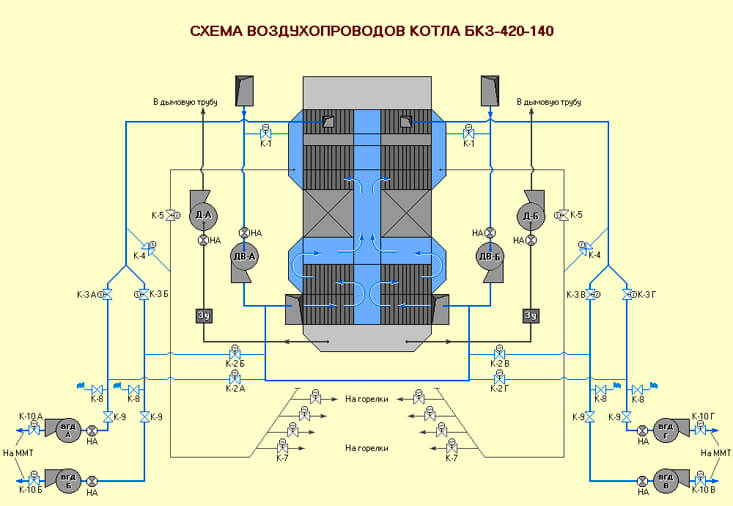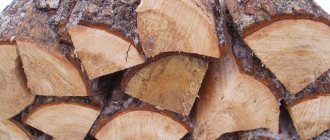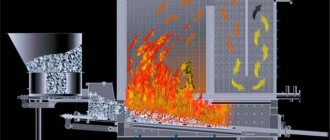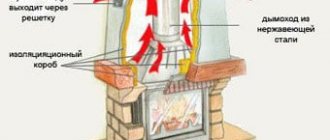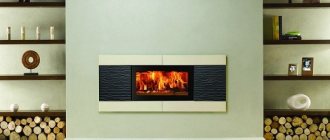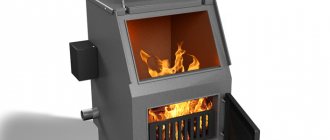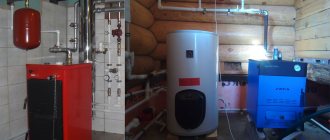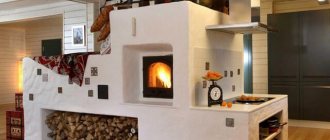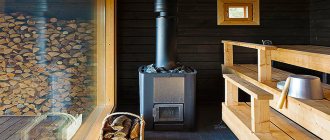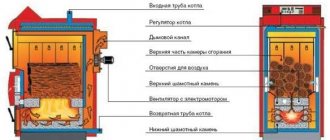Cravings as a physical phenomenon
Before considering the design features of the firebox, you need to understand what a vacuum in the firebox is. Vacuum or draft is a decrease in the pressure of combustion products, air, due to which the inflow of the medium through the channels of the structure into the low pressure zone is ensured. It is customary to distinguish between two types of traction: (See also: Do-it-yourself furnace furnace repair)
- natural - carried out under the influence of the Archimedean force. Air enters the furnace or boiler directly to the burner or grate. Hot air is generated during combustion. It is partly cooled by the inflow of new air, and partly by contact with the walls of the firebox. Hot air will rise up the pipe. The longer the pipe, the stronger the thrust.
To control the process, you can close the hole through which new air enters. Very often in small home boilers and stoves, the natural draft is so good that it even needs to be reduced. The only drawback is that the higher the ambient temperature, the lower the vacuum. And also with poor regulation of the cold air there will be so much inside that the stove will not warm up;
- forced - with the help of special mechanical devices. Usually, smoke exhausters are used to create it - blade mechanisms, fans. The disadvantage of such a device is that the vacuum decreases with distance from the mechanism, and the advantage is that by controlling the rotation speed, you can change the thrust.
(See also: Briquettes for heating stoves)
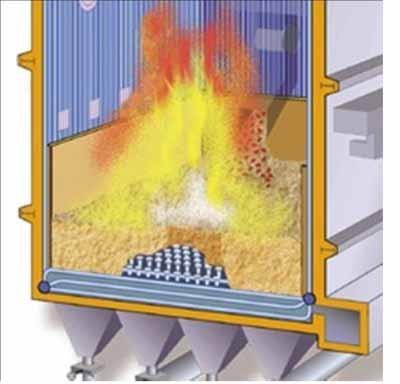
The smoke exhauster requires a lot of electricity, makes noise during operation. For small stoves and boilers, it is better to choose options with fans. Usually, along with forced traction, natural traction will be present in any system, but they are not always co-directional.
Deciphering the boiler modification
The Russian manufacturer of units, the Barnaul Boiler Plant, today it is called Sibenergomash - BKZ LLC, began its activities at the height of the Great Patriotic War in 1942 and was exported from Leningrad.
For a very long time, the boiler units bore the name BKZ, however, in connection with entering the foreign market, a new standard EN ISO 9001: 2000 was obtained, after which the boilers began to be called differently, for example, the BKZ 670-140-3 unit was renamed to Еп-670- 13.8-545, and BKZ 220-100-9 in E-220-9.8-540 KBT.
At the same time, the first letter designations practically changed, and the numbers characterizing the steam production and pressure in the drum of the unit remained unchanged, except that the dimension changed, kgf / cm2 was replaced by a unit in the system - MPa.
The manufacturer adheres to the strict principle of equipment labeling, which can be used to determine many important characteristics of its operation, for example, for the BKZ-420-140 NGM-3 boiler unit:
- BKZ - manufacturer of LLC Sibenergomash - BKZ;
- 420 - hourly steam capacity for superheated steam (PP), t / h;
- 140 - PP pressure, kgf / cm2;
- H - works under supercharge, 49 MPa;
- GM is a gas-oil burner that runs on gaseous and heavy fuel oil.
According to the new standards, this boiler is marked E-420-13.8-560:
- E - natural circulation of water;
- 420 - hourly productivity of superheated steam, t / h;
- 13.8 - steam pressure P, MPa;
- 560 - PP temperature, C.
Furnace dimensions for excellent combustion
When laying out the stove yourself, you need to know how to properly arrange the firebox. Also, this knowledge may be required when choosing a firebox. The firebox is a rectangular chamber inside which fuel is burned.There are always very high temperatures, and therefore special materials must be used. The standard dimensions are 25x38 cm. The height is about 80 cm. Most often, the chamber is used for burning firewood, peat, coal.
The design is such that the discharge in the boiler furnace is uniform. The firebox has an obligatory part - a grate, as well as a blower. The grate is located slightly below the fuel filler door. Firewood, peat, combustible materials will lie on it. Holes are made in it to allow air flow. The blower is a hole in the furnace below the firebox, which is needed to improve traction. The lower part of the firebox under the grate is an ash pan where waste will be collected. (See also: How to increase chimney draft)
There are three subtleties that determine the size of the furnace furnace:
- Creation of maximum temperature. The higher the temperatures in the firebox, the more productive the combustion will be. Temperature varies greatly with size. A wide firebox is bad in that the combustion products in the form of soot will quickly rise up and settle on the pipe walls, impairing the draft, and it will also not have time to warm up. Efficiency is calculated for both furnaces and boilers. Modern designs allow up to 90% for wood-burning stoves. To reproduce such conditions, you need to make the firebox about 25 cm wide, and the length that is necessary for the log. Typically, the depth ranges from 50 to 63 cm.
- Use of refractory bricks for the inside of the firebox. It is easy to create a structure of any size from this material, and the material also withstands high temperatures well.
- Firebox height. It should be as high as the flame is possible. Usually the fire from the wood is higher than the coal. If the stove is used as a stove, then the height of the firebox does not exceed 40 cm, and for heating the room it is better to choose 70 cm.


Brick chimneys and modern boilers
Local resistances in a rectangular chimney
Few people know that the only correct chimney shape is a cylinder. This is due to the fact that the swirls formed in the right angles impede the removal of smoke and lead to the formation of soot. All homemade chimneys of square, rectangular and even triangular shapes are not only more expensive than even a steel round chimney, but also create a lot of problems, and most importantly, they can reduce the efficiency of the best boiler from 95 to 60%
Round section of the chimney
Old boilers operated without automatic control and with high flue gas temperatures. As a result, the chimneys almost never cooled down, and the gases did not cool below the dew point and, as a result, did not spoil the chimneys, but at the same time a lot of heat was spent for other purposes. In addition, this type of chimney has a relatively low draft due to its porous and rough surface.
Modern boilers are economical, their power is regulated depending on the needs of the heated room, and therefore, they do not work all the time, but only during periods when the room temperature drops below the set one. Thus, there are periods of time when the boiler does not work and the chimney cools down. The walls of a chimney working with a modern boiler are almost never heated to a temperature above the dew point temperature, which leads to a constant accumulation of water vapor. And this, in turn, leads to damage to the chimney. An old brick chimney can collapse under new operating conditions. Since the exhaust gases contain: CO, CO2, SO2, NOx, the temperature of the exhaust gases of wall-mounted gas boilers is quite low, 70 - 130 ° C. Passing through a brick chimney, the exhaust gases cool down and when the dew point of ~ 55 - 60 ° C is reached, condensate falls out. Water settling on the walls in the upper part of the chimney will cause them to get wet, in addition, when connecting
SO2 + H2O = H2SO4
sulfuric acid is formed, which can lead to the destruction of the brick channel. To avoid condensation, it is advisable to use an insulated chimney or install a stainless steel pipe in the existing brick channel.
Discharge measurement
In boiler rooms, emergency situations are extremely undesirable, since a lot depends on them, there may be casualties among the service personnel. But even in a small house, a stove or boiler must work properly. Many sensors constantly monitor the operation of the device. There is a vacuum sensor in the firebox. There are several different designs of the sensor, the main thing is that it works properly.
The sensor can measure resolution, or respond when a certain value is exceeded. At enterprises, the signal is transmitted from the sensor to the notification device: light, sound, electromagnetic. And employees or automatics take measures to stabilize the situation. For example, the flow of air or fuel can be reduced. The measures taken depend on the design of the particular boiler or furnace.
First furnace firebox and draft check
After the stove has been folded, two things need to be done: let it dry and determine the quality of the draft. It takes a week for the oven to dry. For this period, all doors are left open, the furnace was blown. You can burn small amounts of paper and wood chips. If you do not allow it to dry properly, it is possible that the material will crack in the future.
To find out how much heat the stove will give, a draft check is carried out. It depends on:
- smoothness of the inner walls, including the walls of the furnace and chimney;
- pipe height - at least 5 meters. Usually they use the recommendation that the higher it is, the better.
Test furnaces are carried out slowly. First, they always burn paper and wood chips, and then they set firewood on fire. Smoke may occur in the room. This indicates not very good traction. Sometimes the problem is solved by burning paper or wood chips in the chimney. A crimson flame indicates incomplete fuel combustion. A lot of soot will form, which will settle in the chimney and narrow the opening.
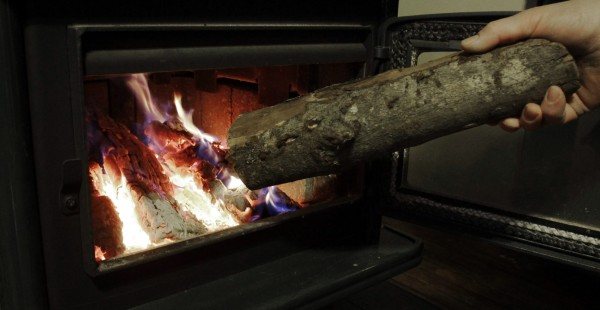

If the fire is straw-yellow and the smoke is colorless, then the stove is folded correctly. You can check traction using a special device. If it is not available, you can use plain paper. A sheet or strip of paper is carefully brought to the open door of the firebox. If it deviates to the firebox with a stream of air and is drawn inward, then there are no problems. A well-folded stove can be decorated with a mantel clock. It will not only heat the room, but also be aesthetically pleasing.
Protection of a solid fuel boiler against low temperature corrosion
In the boiler firing up mode at a coolant temperature of less than 55-65 degrees. Condensation from flue gases forms on the surface of the heat exchanger in the boiler. Condensate mixes with fuel combustion products and gradually clogs the heat exchanger, which reduces the boiler efficiency. Besides, deposits contain acid, which accelerates metal corrosion and significantly reduces the service life of the boiler and chimney.
To protect the boiler against low-temperature corrosion, the temperature of the water in the return pipe, at the boiler inlet, during firing up it is necessary to raise it above 55-65 degrees as soon as possible and not to lower it in the future.
| Boiler protection scheme against low temperaturecorrosion. When the boiler is fired up, the coolant circulates only along the boiler circuit QC |
The boiler protection unit against low-temperature corrosion (item 6 on the heating circuit) divides the circuit into two circuits - on the boiler protection circuit, QC - boiler circuit and OK - heating circuit.
When the boiler is fired up, the three-way valve directs the circulation of the coolant along the boiler circuit, past the heating devices. As a result, the coolant and the boiler warm up quickly.
After the temperature of the coolant in the boiler circuit rises more than 55-65 degrees, the three-way valve begins to gradually mix, add water from the heating circuit.
Thus, the circulation of the coolant in the heating circuit begins only after the boiler circuit has quickly warmed up. The water temperature in the return pipe at the boiler inlet, while the fuel is burning in the boiler, always remains above 55-65 degrees.
From META group
As many as four options for fireplace inserts are produced by META:
- ARDENFIRE - META cast iron furnaces made in France. This model has heat-resistant glasses for monitoring the process. They have good heat dissipation and are durable. All connectors are additionally sealed with a special cord.
- EUROKAMIN - all models are assembled from parts made in Europe. They are also equipped with special glasses. The stove is distinguished by good heat transfer, resistance to high temperatures.
- METAFIRE - fireplace inserts designed for fireplaces. The base is made of steel, the chamber is additionally laid out with refractory plates. The fireboxes in these models can be adjusted in height, glass is also built-in. The price and quality of these models are well balanced.
- Caminetti is one of the new products. The cast iron firebox is lined with high quality steel from the inside. Has heat-resistant glass. It is characterized by rapid heating of the room, has a small size, and is aesthetically beautiful.
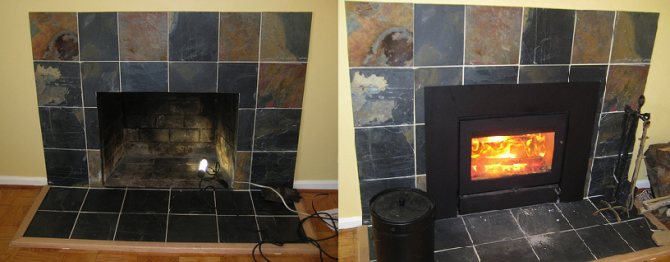

From Keddy
Swedish engineers are renowned for their ability to work with cast iron. Keddi fireboxes are distinguished by the quality of the cast iron used in the first place. The technologies for its production and processing are classified. For a very long time they have mastered the subtleties of working with this material. For this reason, each of their products is distinguished by:
- high efficiency. Heating the room starts at the moment when the fire is just kindled. In addition to cast iron, the construction uses Olivi stone, which accumulates heat and gives it away for a long time;
- reduced fuel consumption. The temperature will be maintained in the room for a long time without the need to frequently add fuel:
- durability. Any product will withstand more than one year of work, a guarantee of up to 10 years.
BKZ-160-100 GM device
According to the principle diagram of the operation of a single-drum BKZ boiler, its design consists of a furnace, several burners, an upper drum with external cyclone separators, several packages of superheaters, an economizer, a feed path, an air heater, chimneys, a smoke exhauster and a fuel supply system. All equipment is carefully designed, installed and adjusted for optimal boiler operation.
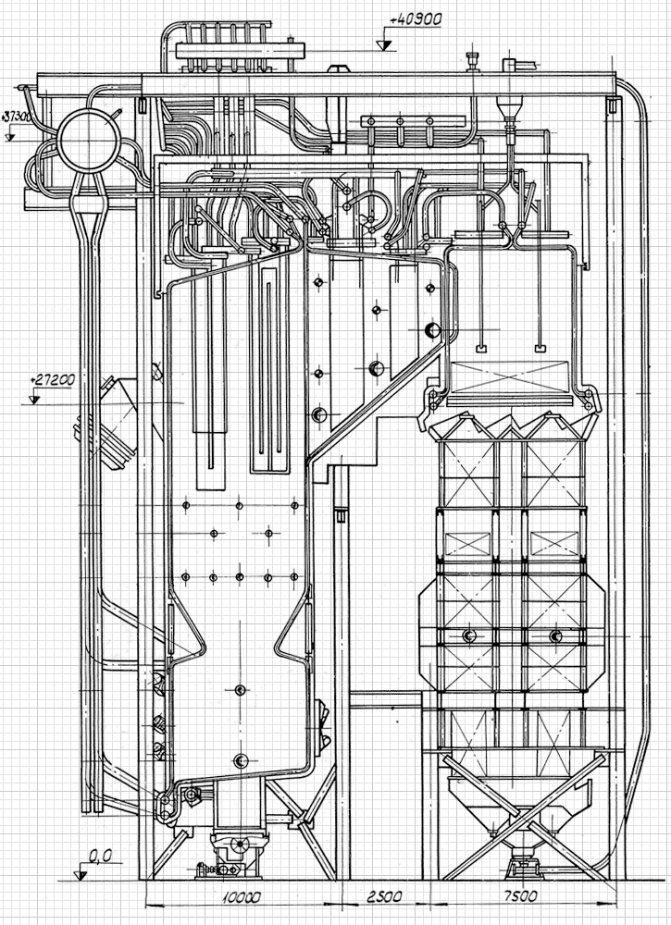

Firebox
The combustion chamber is made of open type, rectangular cross-section, shielded with pipes 60x4 made of boiler steel St.20. The rear and front screens form a low-slope structure insulated with fireclay bricks.
The top of the combustion chamber is closed with a superheater. Furnace 13 independent circuits connected by upper and lower collectors from boiler pipes 219 x 25 mm.
The front and rear screen heating surfaces form a constriction at the level of 11380 mm from the hearth of the furnace, which divides the combustion chamber into two parts: combustion and cooling. For efficient combustion, the pipes in the lower chamber are studded and covered with a heat-resistant chromite mass.
Burner
For fuel combustion on the side, and in some structures on the front wall of the combustion chamber, several burners from 2 to 8 are provided. They can be pulverized coal or gas-oil.
Direct-flow main burners are located at an angle to the horizontal. The discharge burners are located above the main burners and form a swirling flow of the fuel-air mixture with the opposite direction of rotation in the middle of the combustion chamber.For ignition, the boiler unit is equipped with 2 muffle burners located on the sides of the furnace.
Boiler drum and steam separation
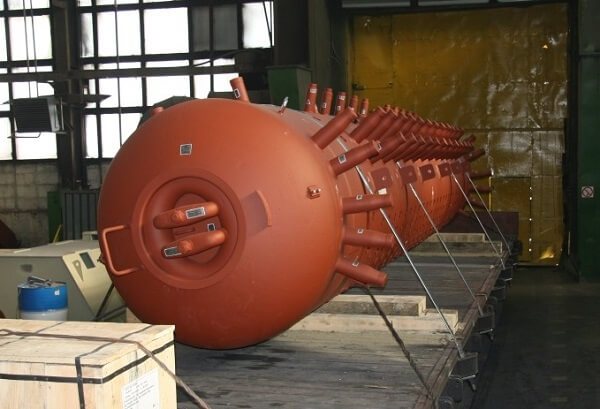

Boiler drum shipment BKZ
The drum of the boiler unit has D = 1600 mm and is made of steel 16GNMA. The boiler has two stages of evaporation. The first is in a clean compartment that includes the drum and front screens. The second includes side and rear screens with external cyclones that form the salt compartment.
The steam-water mixture from the screen bags, the clean compartment goes into the distribution box of the drum and from it rushes into the cyclones, where the drops are separated from the steam. The water from the separators is returned to the drum. And the steam goes through the second stage of separation and enters the superheater.
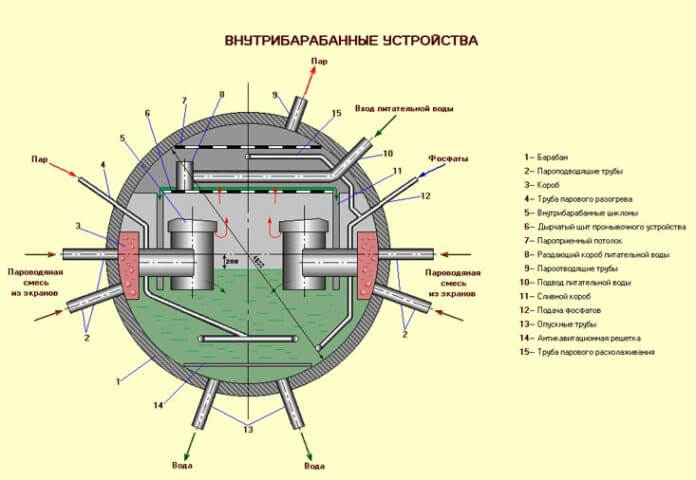

Superheater units
Steam in the superheater moves in 2 independent streams. The superheater is made of 3 components:
- ceiling package, completely shielding the firebox - radiation type;
- 20 screens in front of the horizontal part of the chimney - semi-radiation type;
- the package in the turning part is of convective type.
If the temperature of the saturated steam of the boiler is constant, then the temperature of the superheated steam (TP) can rise. Sometimes, according to the operating conditions of the CHPP equipment, it needs to be reduced. BKZ boilers have a TPP regulation system, which is performed in stage 1 and 2 desuperheaters using condensate injection.
Condensate liquid is supplied to the first stage desuperheater for injection using a steam ejector. In the 2nd stage of the desuperheater due to the pressure difference between the desuperheater and the condenser.
Economizer and Nutrient Path
The economizer is used to heat water before feeding it into the drum by reducing the temperature of the flue gases. A device of blocks of coil boiler tubes 32x4 mm, placed in the boiler shaft.


Economizer for BKZ
Feed water feeding the unit, boiler water circulating through the screens, steam-water mixture, and superheated steam create the feed path of the BKZ boiler unit. To cool the screens, the water must have a design circulation rate, it can pass through the circuit, both once, for example, as superheated steam, and repeatedly, like boiler water in the screens.
The feed water supply is directed to the upper drum and along the lower collectors D = 133x10 mm, and the steam-water mixture is removed from the upper collectors of the same diameter.
Flue gas recirculation
The movement of flue gases along the gas path of the boiler is due to the furnace discharge. Flue gas exhausters for the BKZ boiler have a productivity margin of 10%, and a head up to 30% and a rotation frequency of 746 rpm, providing flue gas emission into the atmosphere up to 1000 m3 / h with T = 150 C.
To reduce nitrogen oxide emissions in boilers of the BKZ, exhaust gases are recirculated. The method began to be applied back in the early 80s.
Studies have shown that the greatest result is achieved in reducing NOx occurs when part of the flue gases are fed through the recirculation line to the central channels of the burners. This method is of little use when burning fuel oil, since there are difficulties with its ignition.
Therefore, for gas-oil furnaces, recirculation is used by mixing part of the flue gases with air and supplying the mixture through the middle or peripheral channels of the burner.
Air heater and air path diagram
To heat the blast air up to 300 C, a regenerative air heater RVP-54 is installed before being fed into the BKZ burner device. Previously, tubular structures were installed on such units, which had large dimensions and low efficiency.
RVP-54 is made of a rotor rotating on a vertically mounted shaft. Inside the structure, there are heating bags with a special profile, through which heat from the flue gases is transferred to the air.The shaft flange is supported by a roller bearing on the air heater beam. The rotor is rotated by an electromechanical drive. Gas and air flows are separated by seals.


